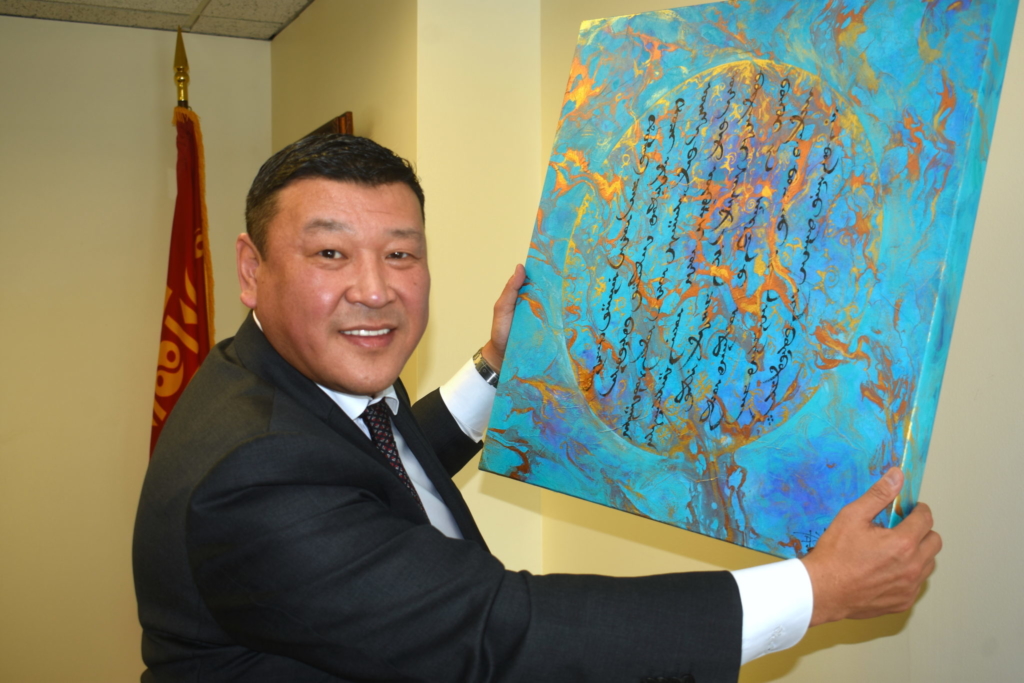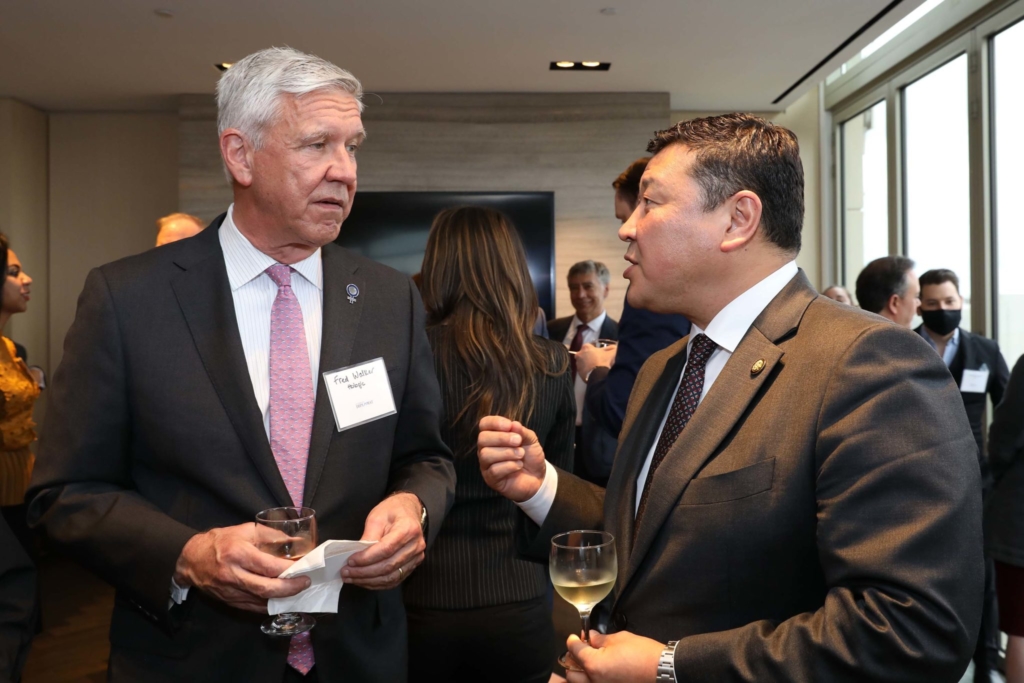Covering 1.56 million square km, Mongolia ranks 18th in size worldwide, slightly smaller than Iran and a bit larger than Peru. Yet it has only 3.3 million inhabitants—about the same as Connecticut-sized Puerto Rico. That gives the predominantly Buddhist country a density of only 2 people per square km, making it the most sparsely inhabited sovereign jurisdiction on Earth.“Once you land in Mongolia, you feel the freedom. The breeze almost kisses you,” he said. “Whenever I return home, I say, ‘God blessed me to be born Mongolian.’”“In 1989, a lot of people came out to protest perestroika,” the restructuring of the Soviet political and economic system promoted by the last Soviet president, Mikhail Gorbachev, Ulziidelger said. “I was also demonstrating, going out into the streets with my friends. My parents were worried. At that time, I had a dream that people would decide their futures for themselves, that they could work and earn money.”“After 1990, everything changed,” Ulziidelger said. “A lot of people started to study abroad, mainly in the United States, Japan, South Korea, UK, Germany, France and Sweden.”

A peaceful democratic revolution“Mongolia is a democratic country, one of the only democracies in Central Asia. Historically, the Mongol Empire was one of the biggest in the world,” he said, adding that among his people’s ancient innovations were three types of passports—including a golden one conferring diplomatic immunity.
Batbayar Ulziidelger really wants to change that.Huge territory, few peopleA socialist republic until 1990, Mongolia shares a 3,450-km border with Russia to the north, and a 4,630-km border with China to the south. Both of its neighbors are nuclear powers with aggressive ambitions whose relations with the United States have worsened dramatically in recent years.Among other things, Ulziidelger helped develop the “Travel Responsibly” national campaign. He also assisted in formulating “Vision 2050,” Mongolia’s long-term development policy.In 1987, Mongolia established diplomatic ties with the United States. In July 2021, US Deputy Secretary of State Wendy Sherman paid a three-day visit to Ulaanbaatar, marking the most senior visit of its kind since then-Secretary of State John Kerry spent six hours there in 2016.But unlike many former Soviet republics, “Mongolia had no shooting, killing or violence. We shifted very humbly and gently.”These days, however, the ambassador is thinking not so much about adventure travel, but more on the impact Russia’s devastating war with Ukraine may ultimately have on his own country.To this day, Mongolia is heavily dependent on imports from Russia, particularly oil. Not wishing to upset its huge northern neighbor, it was therefore no surprise that Mongolia abstained—along with 34 other countries—when the UN General Assembly voted 141-5 to condemn Russia’s invasion of Ukraine on March 2.Mongolia adopted the Cyrillic alphabet in the 1950s, due to Soviet influence. In addition, thousands of Mongolian youths have studied not only in Moscow but also at Ukrainian universities in Kyiv, Kharkiv and Lviv.Even today, between 500,000 and 600,000 Mongolians are nomads, living off the grassy steppes and moving from place to place exactly as their ancestors did thousands of years ago.

“To be honest, we’re deeply concerned about the situation in Ukraine, and saddened at the loss of many precious lives,” he said. “That’s why it’s extremely important that all parties urgently facilitate a ceasefire and de-escalate tensions through negotiations and diplomacy. Otherwise, this escalation of tension will have other unforeseen consequences, seriously affecting peace and stability—not only in Europe but the world.”US-Mongolian trade currently stands at 0 million a year, with more than 30% of Mongolia’s revenues derived from mining—copper, gold, silver and iron ore. Among the country’s more far-reaching goals: boost trade with China to billion a year, while planting one billion trees across Mongolia by 2030, in a dramatic effort to reduce desertification and slow climate change.Nearly 20 years later, Ulziidelger—a karate enthusiast and father of two who speaks fluent English, Japanese and Russian—received Mongolia’s Order of the Polar Star. And in 2016, the Ministry of Foreign Affairs named him Mongolia’s cultural envoy.This passionate traveler has already visited 101 countries—but none of them, he says, compares to his own.“Mongolia is a paradise of adventure and outdoor tourism. That’s why people who trek, hunt and go horseback riding love it,” he said. “You can go to a five-star hotel and relax with your family on the beach, but this is not tourism,” said Ulziideldger, who’s even started a Facebook group for Mongolians who enjoy traveling; it has 766,000 followers.

Born in the eastern city of Choibalsan and raised in Ulaanbaatar, the capital, Ulziidelger earned his bachelor’s degree in English in 1994, another bachelor’s in computer engineering from the Mongolian University of Science and Technology in 1998, and an MBA from that same university in 2000.After the Soviet Union’s collapse, Mongolia witnessed a peaceful democratic revolution in January 1990 that led to the introduction of a multiparty system and market economy. The former Marxist-Leninist Mongolian People’s Revolutionary Party gave way to the current Mongolian People’s Party, a new constitution in 1992, and no more “People’s Republic of Mongolia,” but just simply Mongolia.The jovial, 49-year-old diplomat, Mongolia’s ambassador to the United States since November 2021, was formerly an advisor to the prime minister on foreign policy. Before that, he spent 20 years in the private sector as director, founder and CEO of various tourism, technology and consulting companies.Yet that doesn’t mean Mongolia rejects Ukraine’s sovereignty or territorial integrity, Ulziidelger said.
These days, he said, close to 180,000 Mongolians live abroad, most of them in South Korea. About 40,000 have emigrated to the United States, where the biggest communities are in Los Angeles, San Francisco, Chicago, Denver and suburban Washington, DC. There’s even talk of direct flights between Ulaanbaatar and US cities such as Los Angeles or Seattle.